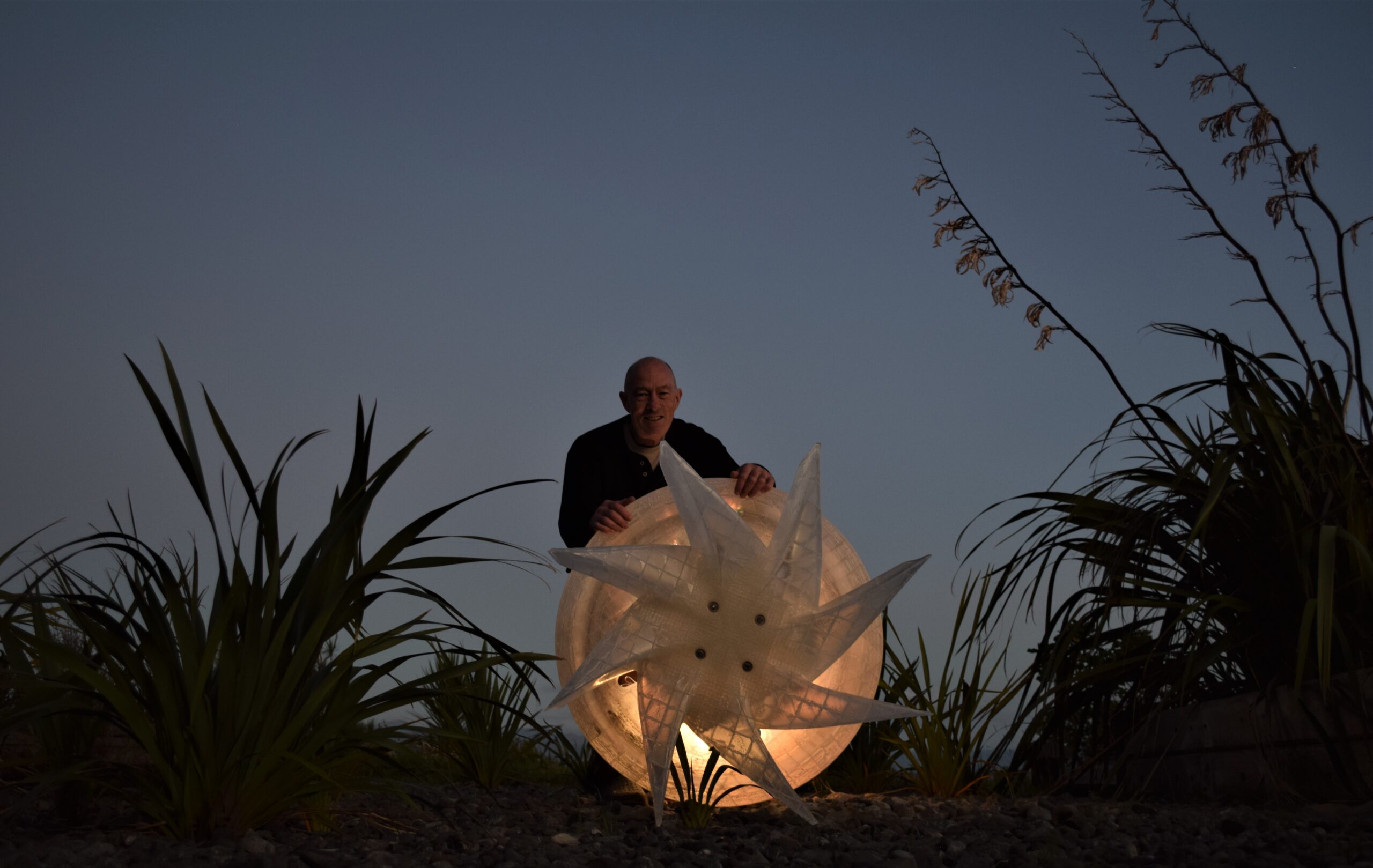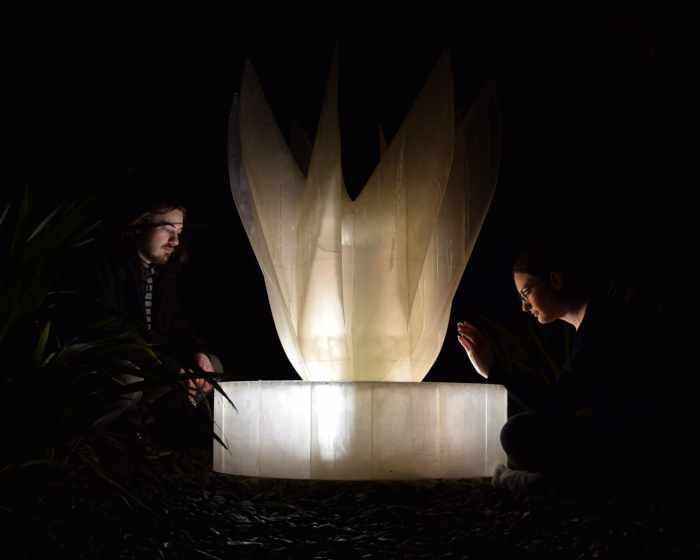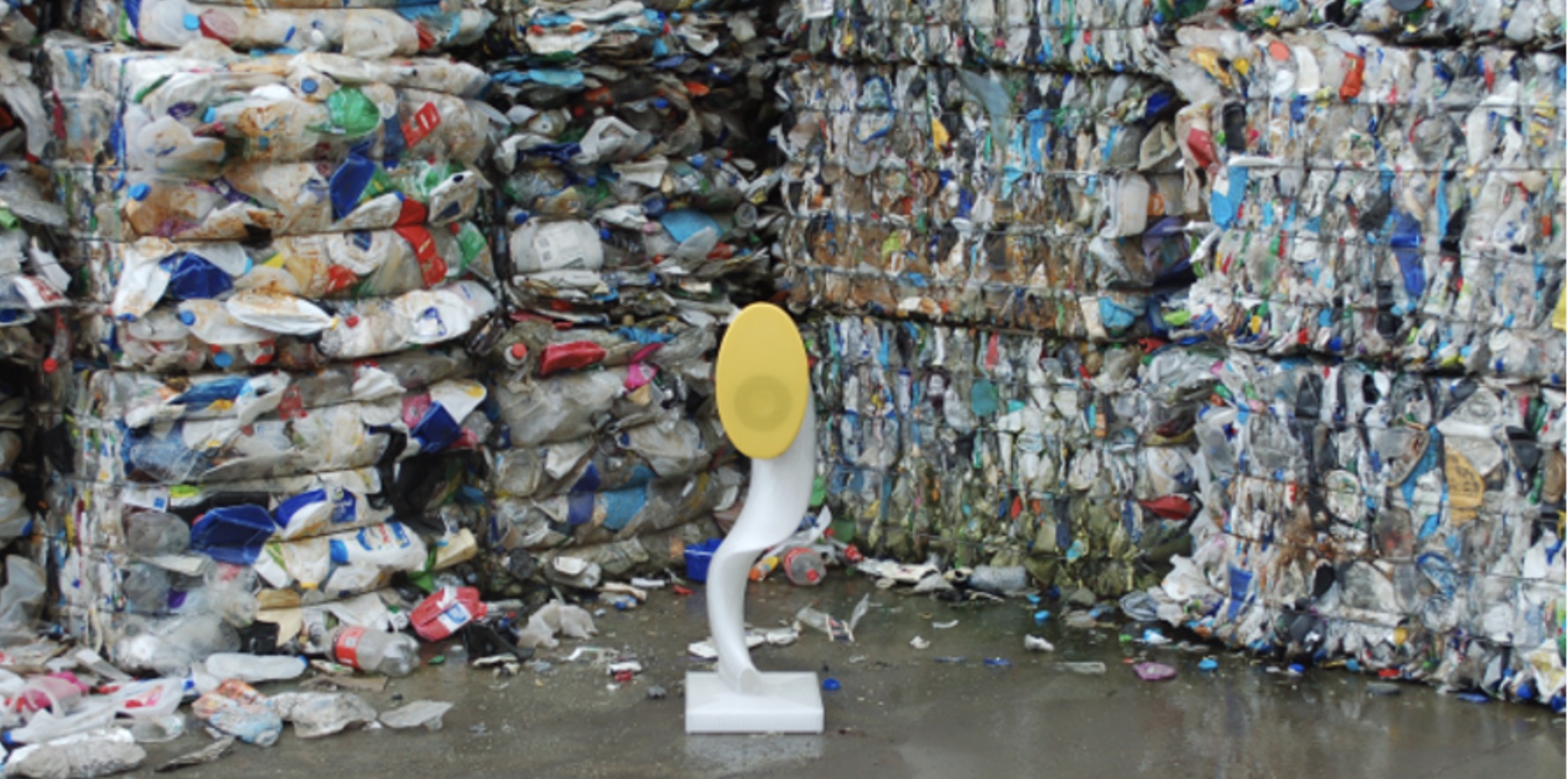Embodying innovation and vision, Ross Stevens, founder of Multi-property Additive-manufacturing Design Experiments (MADE) and a prominent figure at the forefront of industrial design as a senior lecturer at Victoria University of Wellington (VUW), is bringing wind power closer to home with the aid of 3D printing technology. His latest project, PowerPotPlant, employs this technology to address the challenges of traditional wind turbine manufacturing, enhancing material sustainability and integrating renewable energy more seamlessly into our daily lives. Tapping into New Zealand’s abundant wealth of renewable energy sources, Stevens is reimagining how we harness and interact with wind power, breaking down barriers of traditional turbine manufacturing and, in the process, helping mold a more sustainable future.
“The principles behind wind turbines have been well understood for years. What’s changing is the R&D going into electric car motors and batteries. Combined with large-scale 3D printing, they make domestic energy generation and storage economically and ecologically viable—and this will be even more so in a few years when the drive systems from today’s cars are recycled,” explained Stevens to 3DPrint.com.
Living in New Zealand, a country known for its vast renewable energy resources, Stevens has always shown a keen interest in advancing the use of wind power. However, traditional wind turbines often face opposition due to concerns over visual and noise pollution. More importantly, they are often made from non-recyclable, highly toxic materials, which harm the environment once their operational life ends.
“3D printing gets much more competitive when you go larger to make traditionally highly skilled and labour-intensive objects such as boats, buildings, or even turbines,” explained Stevens.
In 2011, Stevens demonstrated his innovative prowess by turning an old council mains pipe into a Savonius-rotor-style windmill. However, the device proved too large and dangerous for residential use. The advent of polymer-based 3D printers provided a new avenue for exploration, and Stevens challenged his students to create a machine for recycling printed objects – the “Recyclebot.”
Fast forward to the present, and Stevens’ research has culminated in a wind turbine made entirely from recycled filament. Named PowerPotPlant, this turbine is lightweight, portable, and uses recyclable polymers. It can be moved by hand to any location, thus significantly reducing the environmental impact compared to traditional wind turbines. Based on the Savonius rotor principle, the design also allows for adaptation to specific environmental contexts and personal preferences.
“If we are going to start making much larger objects with 3D printers we must first figure out how we will unmake them at the end of their useful life. That is where recyclable Bio polymers have a huge advantage over concrete,” Stevens pointed out. “Of all the 3D printing processes, FDM has a unique advantage for larger size and easy recycling, but this requires a shift away from filament to pellet-based material.”
Pot plants are the space-economic and portable versions of traditional flower and vegetable gardens, making growing these an affordable option for people in space-poor places. And these ideas have been applied to this turbine by making it light enough to be moved to any location by hand. For the project, Stevens used a biopolymer (PLA), which is directly harvested from plants, and its design carefully ensures that the materials are kept separate so that the turbine can be easily disassembled and recycled for future use.
PowerPotPlant offers the additional advantage of integrating with used electric car batteries and repurposing them for energy storage. This application extends the batteries’ lifespan and further reduces the dependence on fossil fuel-generated power grids.
Before PowerPotPlant, MADE had explored the potential of large 3D printing and recyclable materials in other projects. In “Fluidity of Plastic,” Stevens examined the possibility of upcycling plastic, mainly PET from drink bottles, into usable items, such as loudspeakers. The process was conducted at relatively low temperatures, thus consuming less energy than reshaping glass or metal.
The ease of assembly and disassembly in the Fluidity of Plastic project underscores the potential of 3D printing and recycling. The shapeshifting capabilities of the material mean that an object can be repeatedly reformed, leading to a cyclical, rather than linear, life for the material. The recycled PET loudspeakers were printed in one piece using the university’s in-house BigRep ONE large-format 3D printer. To make things more interesting, Stevens is currently commissioning a custom-designed larger pellet-based printer with three times the build volume of the BigRep ONE and five times the print speed.
Another of MADE’s previous projects, “Beyond Design,” investigated the possibilities of free, user-friendly design software. Stevens used Tinkercad and Shapeshifter to create a set of speakers, proving that anyone with an internet connection can now participate in digital making. The project also introduced the concept of co-authorship in design, with software and AI playing significant roles. These original wood loudspeakers were made using PLA (70%) blended with wood flour (30%)
on a UP BOX printer that required four smaller parts to be fabricated.
Stevens’ projects underscore the potential of 3D printing, sustainable materials, and renewable energy. They illustrate that the world can make significant strides toward a more sustainable future with innovative design thinking. His work with MADE continues to push the boundaries, challenging conventions, and provoking thought while proposing real, implementable solutions to sustainability problems.
Subscribe to Our Email Newsletter
Stay up-to-date on all the latest news from the 3D printing industry and receive information and offers from third party vendors.
Print Services
Upload your 3D Models and get them printed quickly and efficiently.
You May Also Like
Heating Up: 3D Systems’ Scott Green Discusses 3D Printing’s Potential in the Data Center Industry
The relentless rise of NVIDIA, the steadily increasing pledges of major private and public investments in national infrastructure projects around the world, and the general cultural obsession with AI have...
Formlabs Teams Up with DMG MORI in Japan
In late June, Nick Graham, Chief Revenue Officer at Formlabs, announced on LinkedIn that the company had partnered with DMG MORI, one of the world’s leading machine tool companies, to...
EOS in India: AM’s Rising Star
EOS is doubling down on India. With a growing base of aerospace startups, new government policies, and a massive engineering workforce, India is quickly becoming one of the most important...
3D Printing News Briefs, June 25, 2025: R&D Materials, 3D Printed Veneers, & More
In today’s 3D Printing News Briefs, 3DXTECH has launched a program that gives customers early access to experimental materials, and the first Lithoz CeraFab Multi 2M30 in the Czech Republic...








































